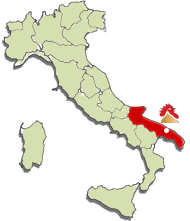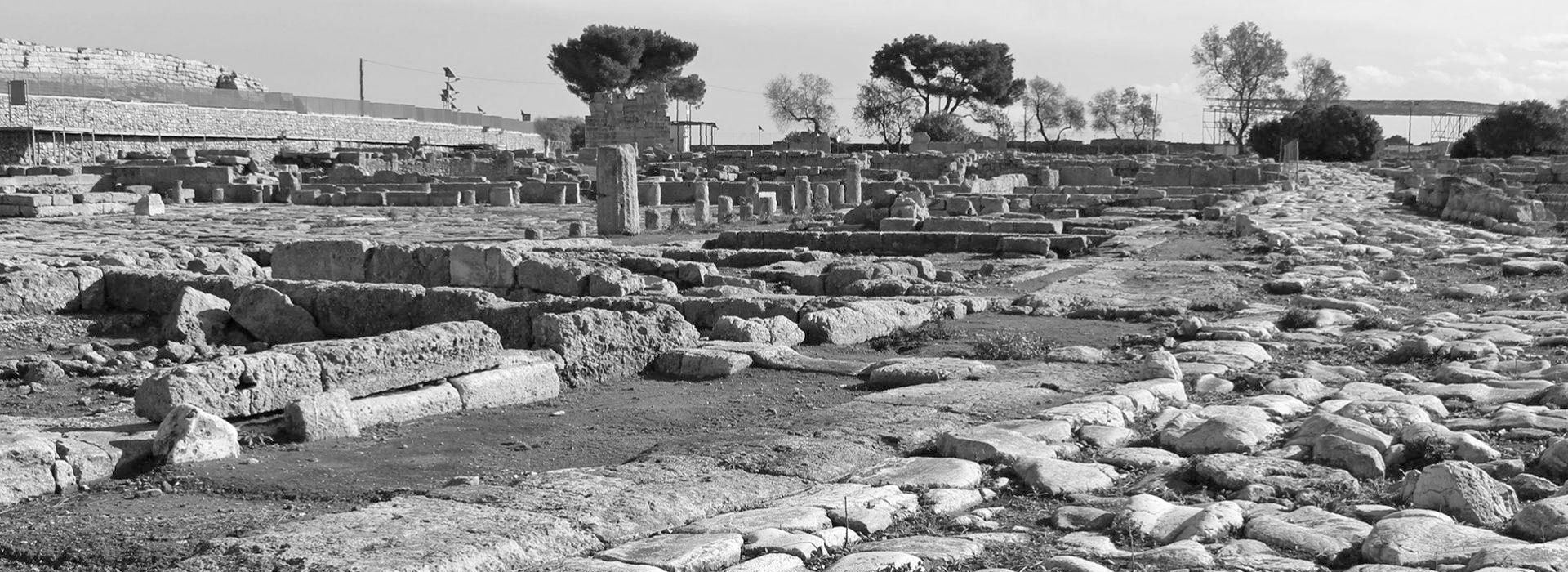Egnazia is the most important archaeological site in Puglia and is only 15 km from the Agriturismo Masseria Spetterrata.
Crossed by the Via Traiana, which connected ancient Rome to Brindisi which was the most important port from and to the East, Egnazia was a very rich city dedicated to commercial and cultural exchanges throughout the Mediterranean basin. Today the beauty of the archaeological area of the excavations and the museum rich in finds have earned the site the nickname of Pompeii of Puglia. A visit to the Archaeological Park of Egnazia allows the guest of the Masseria Spetterrata the opportunity to take a dip in the past of over 3000 years, and is an obligatory destination for lovers of history and art.
To be clear about the historical and archaeological importance of ancient Egnathia it is good to know that the oldest finds in the city date back to the fifteenth century. BC, prehistoric period of the Bronze Age. Later, around the 11th century B.C. (Iron Age), it was occupied by the Iapigi, coming from Illyria. From the 8th century B.C. the city of Egnazia was a very important center for the Italic population of the Messapi. The Messapian dominion lasted until the third century. B.C. , when the Romans annexed Egnazia to the territory of the Republic. Since then the fate of Egnazia was linked to the Roman Empire until its decline in the fifth century. A.D. because of the Gothic invasions.
The archaeological area of Egnazia was the subject of the first excavations in the period in which Puglia underwent French domination (1806-1815), under the viceroyalty of Gioacchino Murat. More than excavations, they were real looting by the officers of the French army, who stole many finds and then sold them to unscrupulous merchants and buyers. It is well known that with the finds from the Apulian excavation areas, Carolina Bonaparte Murat, sister of Napoleon I and wife of Gioacchino Murat, greatly enriched her collection, formed during her reign, of works of art from the lands of southern Italy. When the French were expelled from the return of the Bourbons, Carolina Bonaparte brought with her her collection, which she then sold to Ludwig I, the king of Bavaria, a lover of art and antiquity, thus embellishing the famous museum of Monaco called Staatliche Antikensammlungen .
Subsequently, between 1842 and 1846, driven by hunger, the inhabitants and peasants of the neighboring municipalities of Monopoli and Fasano continued the sacking work, dedicating themselves to the search for finds of all kinds, from ceramics to jewelry, from sculptures to precious objects, to be sold for a few denarii to the clandestine markets of Naples, but also of Rome, Bari and Taranto. The news of these illegal excavations therefore also reached the palaces of Naples then the capital of the Kingdom of the two Sicilies. The Bourbon government therefore attempted to remedy this situation, which incidentally also occurred in other archaeological areas of southern Italy and, specifically in Puglia in the Ruvo and Canosa sites.
The General Superintendency of the Kingdom Antiquities Excavations ordered an inspection at those sites. This inspection was entrusted to the architect Carlo Bonucci. Bonucci, certainly linked to the clandestine merchants and softened by the provincial superintendent, in his report diminished the importance of the Apulian archaeological areas, and suggested concentrating the excavations in the areas closest to Naples, namely Paestum, Herculaneum and Pompeii.
It is easy to imagine that this situation made the happiness of the illegal merchants and art collectors of the time. Modern excavations carried out with a regular method began in 1912 through various intermittent stages. Since 2001, with an agreement between the University of Bari and the Municipality of Fasano, excavation has resumed, which continues today, bringing to light new areas and very interesting finds.
 Masseria Spetterrata
Masseria SpetterrataAgriturismo - Restaurant
72016 Contrada Spetterrata
Montalbano di Fasano (BR)
Puglia - Italy
Tel. +39 328 2230951

Egnazia |
Privacy© All rights reserved
Credits: basilicatanet.com


 Home
Home


 Sito Italiano
Sito Italiano